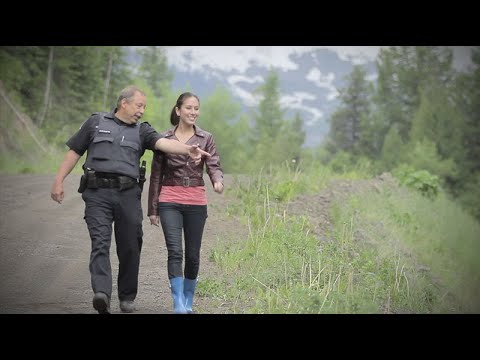Career Overview
Conservation and fishery officers enforce the federal and provincial regulations for the protection of fish, wildlife and other natural resources. They also collect and relay information on resource management.
People in this career work for federal and provincial government departments.
Job Titles
Duties
Conservation and fishery officers perform some or all of the following duties:
- Create public awareness of fish and wildlife conservation and regulations
- Carry out patrols by truck, aircraft, boat or on foot to ensure compliance with the provincial and federal regulations relating to fish, wildlife and the environment
- Investigate complaints, arrest violators, prepare briefs and present evidence in court
- Issue licences, export documents and special permits, and collect royalties assessed on fish, wildlife and timber resources
- Put into use and oversee approved techniques in preventing or overcoming damage caused by wildlife
- Perform resource protection duties
- Gather resource data by making inventories of fish, collecting water samples and assisting biologists in scientific research
- Supervise or provide firearms safety training courses and trapper education courses
Earnings
Earnings is income that workers receive in exchange for their labour. Depending on the type of employment, earnings can be in the form of wages (hourly), salaries (fixed monthly or annual) or self-employed earnings.
Work Environment
# Workers Employed
710% Employed Full Time
66%Work in this occupation is typically performed in a structured environment, such as an office, or an outdoor work environment where the worker is exposed to various weather conditions or an interior space such as vehicle. Also, work may take place in hazardous locations where the worker is exposed to chemicals, infectious bacteria, viruses and other substances that may be dangerous or cause illness.
Career Pathways
With experience, promotion to senior and supervisory positions is possible.
Occupational Interests
It’s important to understand what kinds of occupations align with your interests.
For more about occupational interests visit Skills for the Future Workforce > Characteristics.
Here are the top occupational interest(s) for this career profile:
Education, Training and Skills
- Completion of a college program in renewable resources management, environmental conservation or a related discipline is usually required
- On-the-job training and courses related to law enforcement and resource management are provided
- A class-5 driver's licence, pesticide applicator's licence and explosives licence may be required
Education programs in B.C.

Top Skills
Every job calls for a certain set of skills. Knowing those skills is the first step in finding a good career fit.
Here, you will find the 10 most relevant workplace skills. Some are more important to achieving success in a certain career than others. These skills may come naturally to you or you may need to gain them through education, training and experience.
See the list of work-related skills below, ranked in order of importance for this career. Check out the list and see if this career matches your skills—take that first step!
Using logic and reasoning to identify the strengths and weaknesses of alternative solutions, conclusions or approaches to problems.
Giving full attention to what other people are saying, taking time to understand the points being made, asking questions as appropriate, and not interrupting at inappropriate times.
Talking to others to share information effectively.
Understanding written sentences and paragraphs in work-related documents.
Considering the relative costs and benefits of potential actions to choose the most appropriate one.
Keeping track of and assessing your performance, other individuals, or organizations to make improvements or take corrective action.
Being aware of others’ reactions and understanding why they react as they do.
Convincing others to change their mind or behaviour.
Being able to solve novel, ill-defined problems in complex, real-world settings.
Adjusting actions in relation to others' actions.
Labour Market Statistics
Discover data, facts and information that have been gathered and analyzed. Learn about the characteristics of the economy and labour market in B.C.
Employment
Find out about employment types and trends by region and industry.
Employment
710Employment by Region







| Region | Employment | % Employment of this Occupation |
|---|---|---|
| Cariboo | 80 | 11.2% |
| Kootenay | 45 | 6.3% |
| Mainland/Southwest | 185 | 25.9% |
| North Coast and Nechako | 80 | 11.2% |
| Northeast | 25 | 3.5% |
| Thompson-Okanagan | 120 | 16.8% |
| Vancouver Island/Coast | 185 | 25.9% |
Labour Market Outlook
The B.C. Labour Market Outlook is a 10-year forecast of the expected supply and demand for labour in the province. It’s usually updated every year. The purpose is to provide British Columbians with the knowledge to make informed decisions on careers, skills training, education and hiring.
Forecasted Job Openings (2025-2035)
240Forecasted Job Openings
Forecasted Employment Growth Rate
Composition of Job Openings
Job Openings by Region (2025-2035)







| Region | Job Openings | Avg. Annual Employment Growth |
|---|---|---|
| Cariboo | 10 | -0.4% |
| Kootenay | 10 | -0.2% |
| Mainland/Southwest | 70 | 1.0% |
| North Coast and Nechako | 20 | -0.2% |
| Northeast | Not available | Not available |
| Thompson-Okanagan | 30 | 0.0% |
| Vancouver Island/Coast | 80 | 0.9% |
Industry Highlights
Learn about the opportunities in B.C.'s major industries, including employment trends, earning potential, locations of work and more.
Forecasted Job Openings by Industry
| Industry | Job Openings (2025-2035) |
|---|---|
| Public Administration | 180 |
| Information, Culture and Recreation | 40 |
| Agriculture and Fishing | 10 |
| Educational Services | 10 |
| Repair, Personal and Non-Profit Services | 10 |
Resources
Resource information is currently not available.








